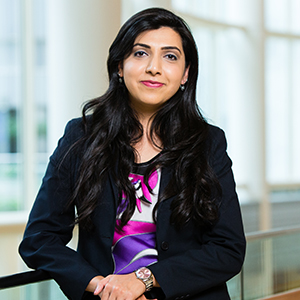Across the U.S., dental schools are trying to encourage students to pursue careers in community dentistry to close the disparity gap in treating underserved populations. At the University of Minnesota, dental students share some training with dental therapists — a relatively new member of oral health team created to care for minority, low-income, and uninsured populations. This arrangement could positively influence the attitudes of dental students by making community dentistry more relevant and interesting. However, according to a new study co-authored by School of Public Health student — and dentist — Makshita Luthra, dental students show a drop in interest in caring for underserved populations over the span of their education, which suggests other pressures are at play.

The study was published in the Journal of Dental Education.
Luthra identified the decline after partnering with School of Dentistry Assistant Professor Priscilla Flynn and Associate Professor Christine Blue on a yearly survey that measured dental students’ beliefs in caring for the underserved. The survey measured their beliefs regarding societal expectations, professional responsibility and personal efficacy, and access associated with oral health care.
“In the first year, 81 percent of students had a positive attitude toward working with vulnerable and underserved populations,” says Luthra, a public health administration and policy MPH student. “By the fourth year, this dropped to 77 percent.”
Curiously, the positive attitude scores actually reached their lowest point during the third year — 75 percent — when dental and dental therapy students have greater clinical contact, before actually climbing to 77 percent by the fourth year.
Luthra suspects the overall decline could be partially caused by the financial burdens of a dental education. “Dental students have a lot of loans and caring for the underserved loses priority over making enough money to pay off these debts,” says Luthra.
The authors suggest the future keys to maintaining a high positive attitude toward community dentistry involve introducing an intentional, well-organized, and continuous curriculum that educates dental students on the disparity issues producing underserved populations. They also recommend addressing the economic pressures discouraging dentists from working in community dentistry.

